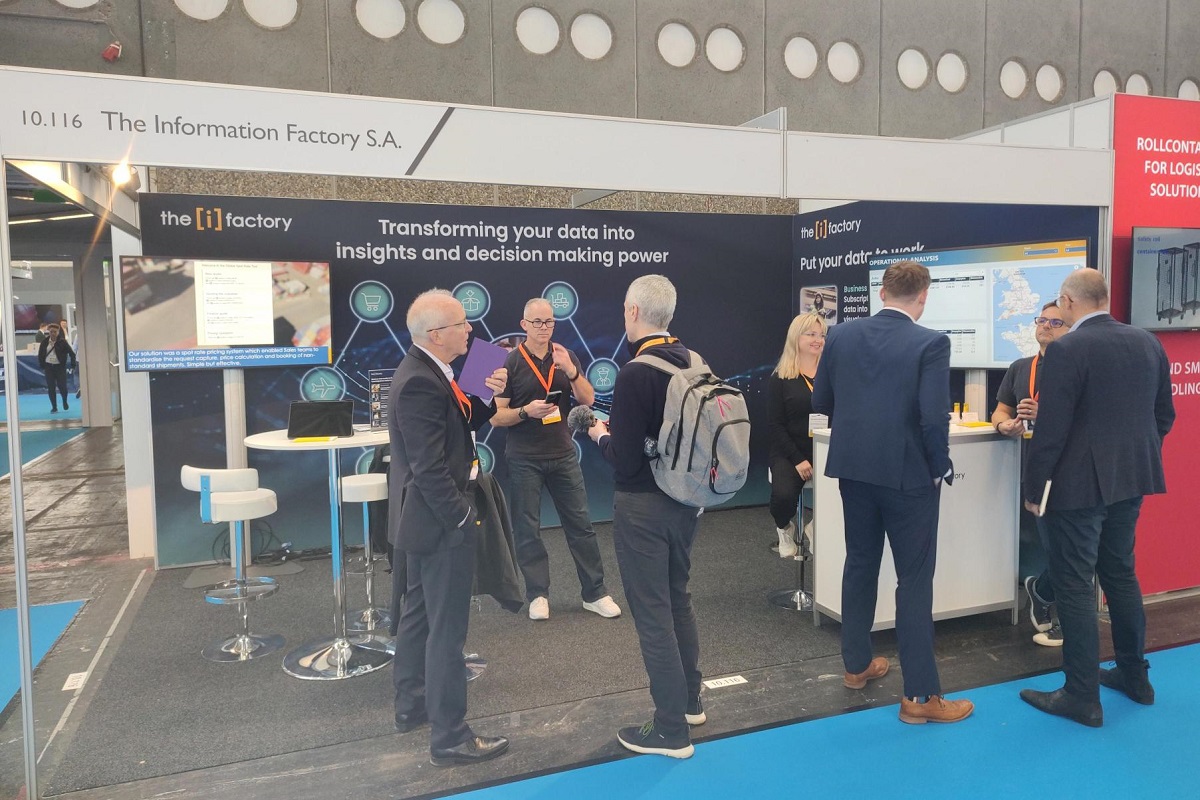Interview – The Information Factory on the importance of end-to-end data

The flow of data through the end-to-end delivery chain is essential in today’s parcel and postal sector to reduce cost and improve efficiency, according to Gordon Steward, Marketing Director at the Information Factory – a business intelligence firm focused on the logistics and supply chain sectors.
Steward, who has previously worked for Oman Post as a Business Consultant and DHL Express USA as a Senior Director, spoke exclusively to CEP-Research at Parcel+Post Expo in Amsterdam, the Netherlands, last week.
At the event, the firm showcased its range of business intelligence, advanced analytics and data driven decision support systems available to the delivery sector.
The company also presented two new solutions. The first, the postal and parcel costing tool, delivers an end-to-end view of an operator’s costs for all service levels and shipment types – drilled down to individual shipment level.
The second, the digital collaboration tool, is a try before you buy innovation that provides a secure portal where users can upload sample data and then quickly see the types of business intelligence reports and analytics that can be delivered.
CEP-Research: What are some of the major trends shaping the delivery sector?
One of the major things, which is evident at Parcel+Post Expo and from talking to industry people in general, is how to make the last mile more efficient, easier, quicker and less costly for the supplier. This is why we have seen an explosion of parcel lockers and parcel locker companies covering both the hardware and software, and growing numbers of these being integrated into the last mile.
Do you think there is also scope to make the middle mile more efficient?
Yes, but here the industry is changing. It used to be dominated by lots of large companies trying to manage all ends of the process. But now it is a much more fragmented market. There are so many more different players doing specific pieces of the delivery puzzle. I think the important thing now is to make sure that all these players integrate physically, and that data continues to flow through the network faster than the parcels are moving.
How do you ensure that data is flowing efficiently?
Companies need to make sure that the stuff behind the scenes is working really, really well. It all needs to be connected and tested before going live. Your customers, business partners, and suppliers won’t be happy if the data delivery chain is not fulfilled. The fact that there are more players in the market sharing data throughout the delivery is also very important. Everything needs to be linked together.
If you are a postal or delivery company looking to make data flow across your entire network, where do you start?
Companies need to map out their end-to-end processes. Start simple – companies could even just draw out the process on a piece of paper. They need to look at all of the different things involved, from collecting a parcel at one end through to delivering it at the other. Then communication with the technical experts at each stage in the process is essential to make sure the data is flowing through the whole chain.
How important is data to the delivery sector today?
This has always been a data-rich sector, but it has become more and more joined up. I always refer to a quote from Fred Smith, the Founder and former CEO of FedEx, who said back in 1978: “The information about the package is just as important as the package itself.” I learned that phrase when I first joined DHL. Back then I was a customer service manager in Saudi Arabia getting calls every day, with customers asking, “Where’s my shipment?” Data then was just about a particular group of parcels.
But now, data is being aggregated and shared across delivery chains, between companies, and across borders. And when the data is used efficiently in this way, that’s when the magic happens. It can be used to analyze processes and look at what can be improved, and to provide transparency to the end customer.
